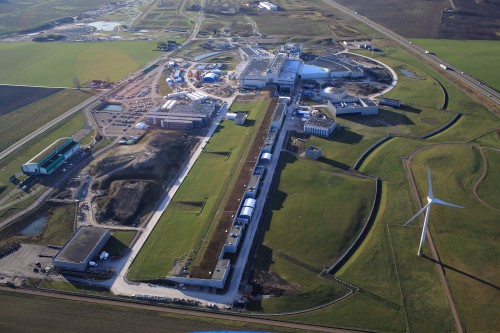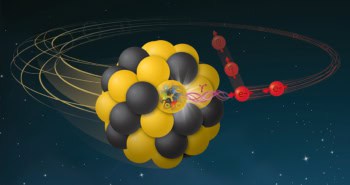
Top physics facilities in Europe and the US have come together to tackle the climate crisis. The labs – including CERN, the European Space Agency, Fermilab and the Los Alamos National Laboratory – have announced that they will step up their scientific collaboration on carbon-neutral energy and climate change as well as share best practices to improve the carbon footprint of big-science facilities.
Large labs demand a huge amount of energy. The CERN particle-physics lab near Geneva, for example, uses 1.3 terawatt hours of electricity annually, which is enough to power 300,000 UK homes for a year. In 2020 the lab released its first public Environment Report that detailed the status of CERN’s environmental footprint. It found that greenhouse-gas emissions emitted by the lab in 2018 was 223,800 tonnes of carbon-dioxide equivalent.
Planned facilities, such as the European Spallation Source that is being constructed in Lund, Sweden, meanwhile, have integrated sustainability into their design such as diverting waste heat into local heating systems instead of it being vented into the atmosphere.
Eager to learn
In a statement, released today by the US National Laboratory Directors’ Council and EIROforum, the 26 labs say that the impacts of climate change are becoming “increasingly visible” through the outbreaks of disease as well as extreme weather events such as heat waves, storms, droughts and flooding.
“Science has a key role to play, and in particular at big-science facilities, where we are constantly pushing forwards the frontiers of knowledge and technology to the highest levels of excellence and inventiveness,” the statement notes. “Research and datasets provide a foundation on which to build innovative technologies and solutions that not only mitigate the impact of climate change, but also help us protect the Earth’s ecosystems, including the human populations around the world vulnerable to a wide array of environmental threats.” Leading by example: going green in the lab
Francesco Sette, director general of the European Synchrotron Radiation Facility, who is also chair of EIROforum, told Physics World that over 25% of users’ research at the facility is linked to climate change and the environment. He also says that the lab has decreased its energy consumption by 20% while at the same time boosting the performance of the synchrotron via a recent upgrade.
“ESRF’s commitment to address and mitigate climate changes is also in identifying the solutions to reduce our carbon footprint,” says Sette. “On a long-term perspective, we are looking for further improvements in energy consumption, and environmental impact thanks to renewable energy sources and improved practices and procedures.”
Sette adds that the labs are “eager” to learn from each other and will now further develop best practices and develop new sustainable technologies.
The move comes just days before the 2021 United Nations Framework Convention on Climate Change Conference of Parties (COP26) in Glasgow, UK, which will be attended by world leaders.



